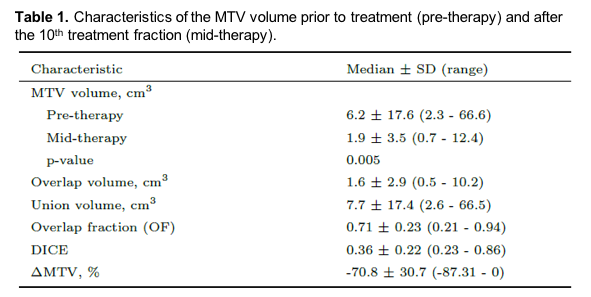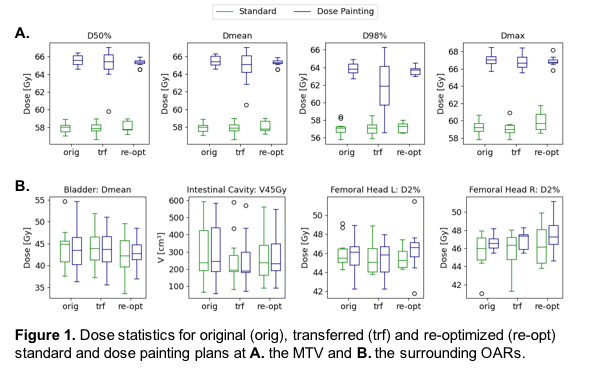Volumetric and dosimetric stability of metabolic tumor volume in dose painting of anal cancer
Ana María Acosta Roa,
Norway
PH-0216
Abstract
Volumetric and dosimetric stability of metabolic tumor volume in dose painting of anal cancer
Authors: Ana María Acosta Roa1, Vilde Eide Skingen2, Bernt Louni Rekstad1, Marianne Grønlie Guren3, Espen Rusten1, Eirik Malinen2
1Oslo University Hospital, Department of Medical Physics, Oslo, Norway; 2University of Oslo, Department of Physics, Oslo, Norway; 3Oslo University Hospital, Department of Oncology, Oslo, Norway
Show Affiliations
Hide Affiliations
Purpose or Objective
The primary aim of the study is to evaluate if the metabolic
tumor volume (MTV) in anal cancers is stable during fractionated radiotherapy
and how volumetric variations translate into dosimetric variations following
dose painting of MTV based on pre-therapy PET/CT. Secondary aims are to assess doses to organs
at risk (OARs) and use of adaptive dose painting.
Material and Methods
This study included 11 patients with squamous cell carcinoma of the
anal canal who received radical fractionated radiotherapy. Ethical approval and
written informed consent from all patients was obtained. 18F-FDG PET/CT images
were acquired at pre- and mid-treatment (around the 10th fraction).
Conventional target volumes and OARs were contoured manually on both images
series. The MTV was generated from the PET images by adaptive thresholding. Treatment
plans were created retrospectively based on both image series, and optimized in
the Eclipse RT planning system (Varian Medical Systems) using VMAT technique
with two full arcs and 6 MV photons. Standard plans consisted of 48.6 Gy, 54 Gy
and 57.5 Gy in 27 fractions to elective lymph nodes, lymph node metastases and
primary tumor, respectively. Dose painting plans included an extra dose level
of 65 Gy to the MTV. Pre-treatment plans were also transferred and
re-calculated in the mid-treatment basis. Overlap fraction and DICE similarity
between MTVmid and MTVpre was calculated. Wilcoxon
signed-rank test was used to evaluate differences.
Results
MTV decreased
from pre- to mid-treatment in 10 of the 11 patients, and on average 71 % of MTVmid overlapped with MTVpre
(Table 1). Dose statistics for MTV in case of original, transferred and
re-optimized (adapted) plans for standard and escalated regimes are shown in
Figure 1A. The median (D50%) and mean dose (Dmean) to the MTV were robust
against anatomical changes from pre- to mid-treatment for both the standard and
dose painting plans. The transferred dose painting plans had significantly lower
D98% values compared to original and re-optimized plans plans (p=0.047). Figure 1B shows relevant dose statistics of for
OARs. No significant differences were found between standard and dose painting
plans, with the exception of V45Gy to the intestinal cavity for transferred
plans (p = 0.042), in which dose painting gave a slightly lower population-based
dose.


Conclusion
Despite volumetric
changes in the MTV, adequate dose coverage was observed in the dose painting plans
apart from underdosage of a small part of the volume. The findings indicate
little or no need for adapted dose painting, although greater changes may occur
at later time points in the fractionated schedule. Dose painting appears to be
a safe treatment alternative with non-inferior dose sparing of OARs compared to a standard regime.